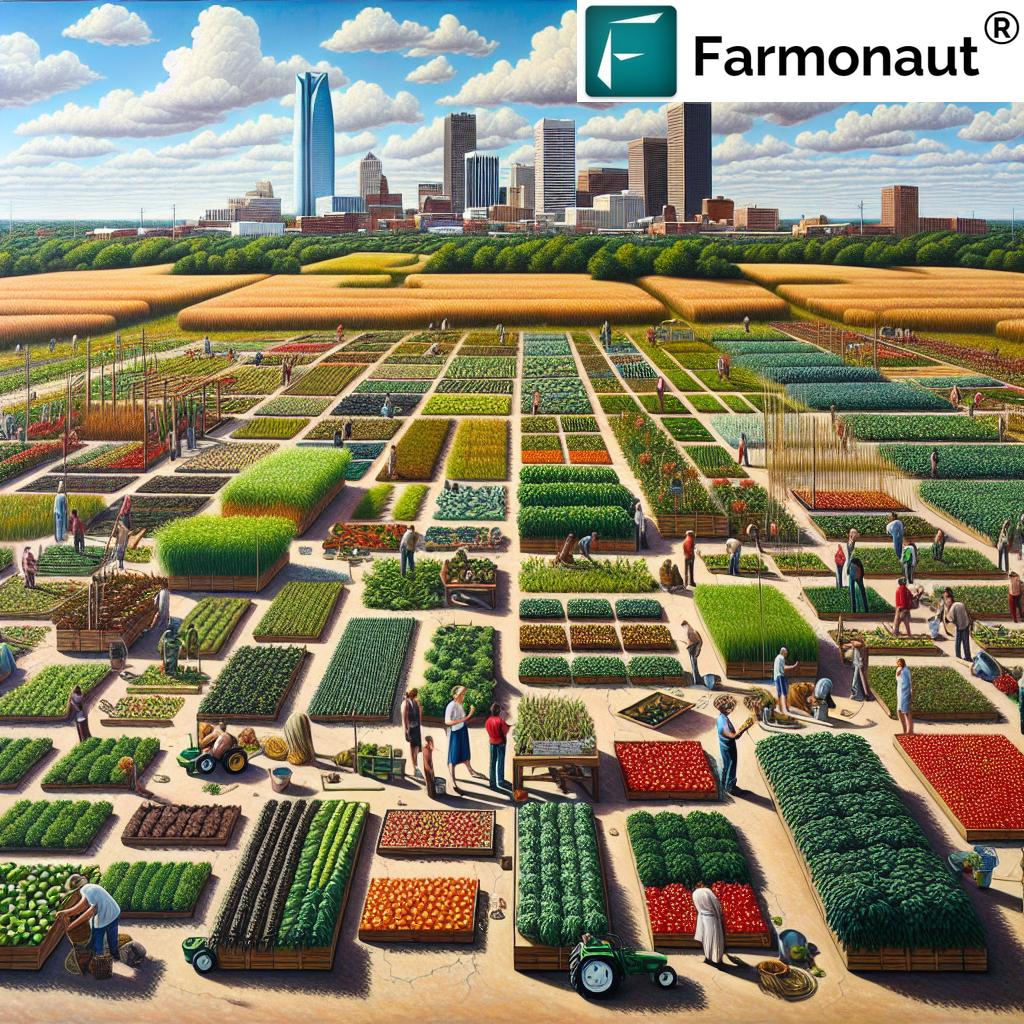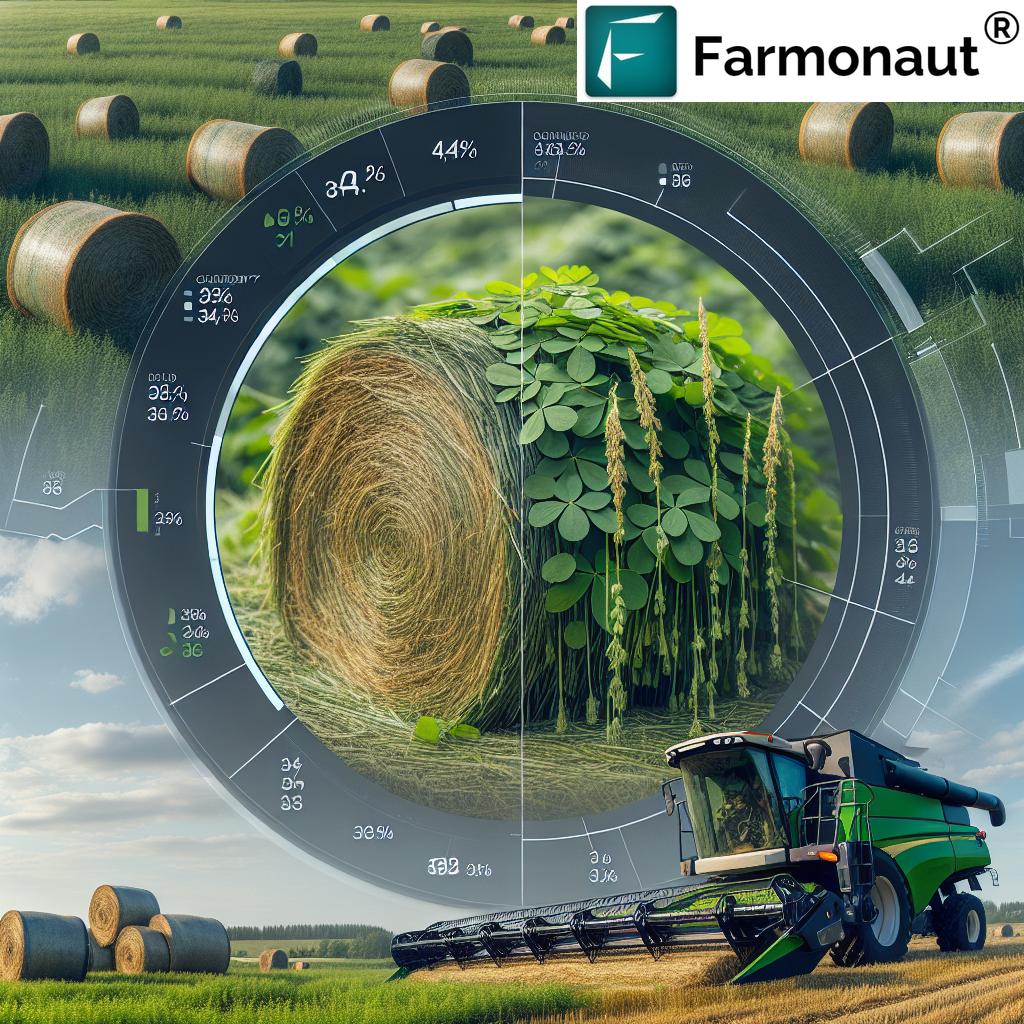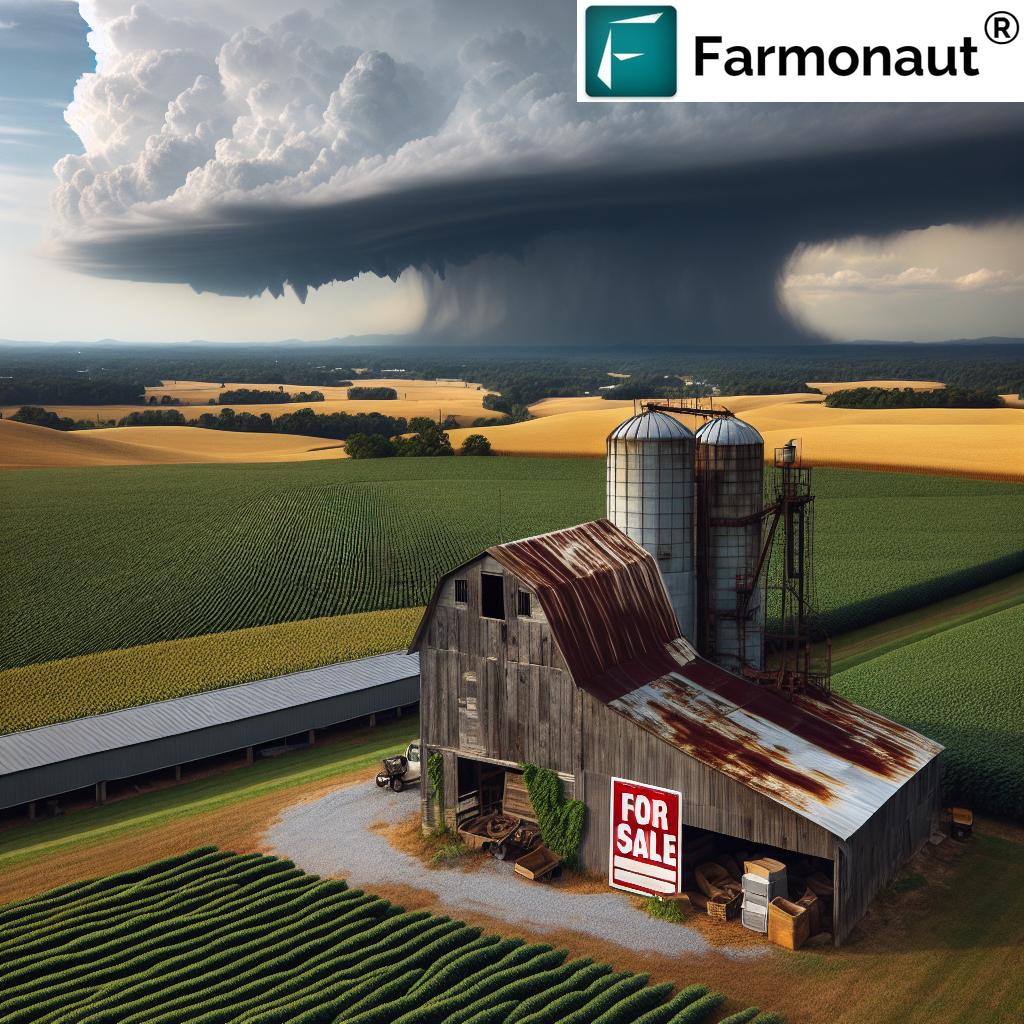Oklahoma Farmers’ Strategic Shifts in Agriculture Amid Urbanization
Introduction: Urbanization’s Influence on Oklahoma Agriculture
Urbanization is accelerating across the United States, reshaping landscapes and economies—even in deeply agricultural states like Oklahoma. As more residents move into cities, the balance between rural and urban needs is shifting. For Oklahoma farmers, this evolution presents both challenges and opportunities. Meeting modern urban food demands and sustaining their own livelihoods has required strategic adaptation, innovation, and a renewed focus on sustainable farming practices in Oklahoma.
Historically, Oklahoma’s agriculture sector has been synonymous with wheat, cattle, and monocultures spread across expansive plains. Today, we see a broader agricultural landscape. Farmers are diversifying crops, adopting sustainable, urban agriculture in Oklahoma, integrating advanced technologies, and connecting more directly with consumers through local food markets and innovative distribution like Oklahoma food hubs. These changes are not only mitigating the risks brought by urbanization—they are looking to position Oklahoma as a leader in sustainable agriculture for the future.
This comprehensive exploration dives into how Oklahoma’s farmers are strategically reinventing their practices—from diversified crop portfolios and fresh local produce Oklahoma initiatives, to innovative food system structures and the adoption of advanced technologies by forward-thinking companies like Farmonaut.
Diversification of Crops: Adapting to Modern Demands
In recent years, diversified crop portfolios have emerged as a critical strategy for Oklahoma farmers seeking to confidently face the volatility caused by shifting urban markets and climate uncertainty. Traditionally, monocropping—particularly large-scale wheat cultivation—dominated the state’s agricultural identity. However, monocropping brings risks: a pest outbreak, disease, or a drop in market price can devastate an entire season’s income.
To mitigate such risks and tap into new opportunities, farmers now pursue diversification with gusto. This shift includes introducing a variety of fruits, vegetables, and specialty crops into their rotation. Tomatoes, peppers, and leafy greens—all crops well-suited to Oklahoma’s climate and soil conditions—are found alongside traditional staples. By expanding the range of what is grown, farmers are not only hedging against risk but are able to:
- Meet evolving consumer tastes in urban and suburban markets
- Tap into niche food trends (organic, ethnic, or local specialty produce)
- Reduce reliance on a single crop, thus improving overall farm resilience
According to recent reports, over 30% of Oklahoma farmers now engage in diversified cropping—a testament to the sector’s adaptability and drive towards sustainability.
Key Advantages of Crop Diversification in the Oklahoma Market
- Reduces exposure to pests, diseases, and adverse weather impacting a single crop
- Boosts soil health through varied nutrient profiles and crop rotation
- Taps urban consumers’ demand for fresh local produce Oklahoma-grown, especially via farmers markets and local grocers
- Improves market access for specialty and exotic crops
- Contributes to food security and economic resilience for the entire community
This emerging trend is paving the way for a more resilient and sustainable agricultural landscape in Oklahoma, as producers continue to align with consumer preferences and environmental best practices.
Adoption of Sustainable Farming Practices in Oklahoma
Amid growing concerns about climate change and resource depletion, sustainable farming practices in Oklahoma have taken center stage. By adopting scientifically-backed, environmentally sound approaches, farmers are not only ensuring the ongoing productivity of their land but also appealing to the values of urban consumers who increasingly demand organic and sustainably produced food.
Modern Sustainable Methods in Oklahoma Farms
- No-till farming: Disturbs the soil minimally, preserving topsoil structure and organic matter. This leads to enhanced soil health and reduces erosion and water runoff.
- Cover cropping: Growing plants like rye or clover during off-seasons prevents soil erosion, suppresses weeds, improves soil fertility, and fixes nitrogen naturally.
- Crop rotation: Alternating the types of crops planted on a field each year breaks disease and pest cycles and helps balance soil nutrients.
- Integrated Pest Management (IPM): Combines biological controls, crop rotation, and careful chemical use to reduce overall chemical inputs.
- Efficient water management: Including drip irrigation, rainwater harvesting, and precise irrigation scheduling to conserve water.
By implementing these sustainable methods, farmers in Oklahoma reduce reliance on expensive inputs (fertilizers, pesticides), bolster soil and water conservation, and position themselves as responsible stewards of the land.
Farmonaut’s Role In Advancing Sustainability
At Farmonaut, we champion innovation that puts sustainability at the core of farm operations. Our advanced, satellite-based crop monitoring helps Oklahoma farms optimize resource use by delivering real-time data on crop health, soil moisture, and environmental variables. This enables:
- Smarter irrigation and input decisions—reducing costs and waste
- Better response to weather impacts with timely, precise information
- Increased yields while minimizing the environmental footprint
We also provide carbon footprinting tools which empower agricultural businesses to monitor, report, and actively reduce their farm-based emissions, aligning with market and regulatory priorities.
Urban Agriculture in Oklahoma: Bringing Food Closer to Urban Communities
The recent expansion of urban agriculture in Oklahoma is transforming the way fresh local produce reaches consumers. City-based farms, community gardens, and rooftop plots have begun dotting the urban landscape—from Oklahoma City’s neighborhoods to innovative projects in Bartlesville and Tulsa.
Urban agriculture brings food production within city limits, allowing farmers to cut transportation costs, provide fresher products, and reduce the carbon footprint associated with distribution. Noteworthy examples include the Ragtag Resilience urban farm in Bartlesville, where a family cultivates niche and exotic crops (like Tahitian melons and Malabar spinach) for local residents, markets, and a strong Community Supported Agriculture (CSA) program.
Benefits of Urban Farming for Oklahoma’s Urbanization Era
- Increases access to fresh local produce Oklahoma for densely populated, urban communities
- Strengthens connections between farms and the urban consumers they serve
- Utilizes underused urban land to boost food security and community development
- Reduces transportation and environmental costs by shortening supply chains
Farmers leading the way in Oklahoma’s urban farming movement are not only boosting food access for their neighbors—they are also driving innovation and supporting the local economy through direct-to-consumer sales and community engagement.
Community Supported Agriculture Oklahoma: Reinventing Farm-to-Table Connections
The rise of community supported agriculture in Oklahoma (CSAs) is bridging the gap between farmers and consumers—especially in cities and suburbs. The CSA model is simple yet powerful: consumers buy a share of the farm’s harvest at the beginning of the season, and receive regular deliveries of fresh local produce. This arrangement provides security for farmers and guarantees consumers a steady supply of high-quality, seasonal crops.
CSAs support sustainability by encouraging diversified production, reducing waste, and aligning harvests with actual demand. Farms like Three Springs Farm near Tulsa have found great success offering a variety of crops for CSA members and participating in local farmers markets Oklahoma.
Why CSAs Are Growing in Popularity:
- Direct connection between farm and household—consumer knows their farmer
- Stronger local economy—money stays within the community
- Accessible, fresh, seasonal food—meets the needs of the urban population
- Sustainable farming practices in Oklahoma are promoted and supported by an engaged customer base
With CSAs, both farmers and consumers are empowered to shape a more reliable, transparent, and environmentally friendly food system—a vital adaptation for the state’s evolving demographics.
Oklahoma Food Hubs: Building Bridges Between Farmers and Markets
A key innovation in Oklahoma’s agri-food sector is the development of Oklahoma food hubs. These are centralized, often cooperative facilities that aggregate, process, and distribute locally produced food.
For small and mid-sized Oklahoma farmers, food hubs offer access to larger, institutional markets (like schools, hospitals, and restaurants) that would be difficult to reach alone. This system also enables economies of scale—reducing transport and logistics costs while ensuring that fresh, local, sustainably produced food gets to more consumers.
- OKC Food Hub is a notable example, catalyzing the distribution of local produce and creating new market opportunities for family-operated farms statewide.
Oklahoma Food Hubs: Key Advantages
- Increase farmer income via larger, more stable contracts
- Reduce food miles and promote sustainability in food distribution
- Facilitate compliance with food safety and traceability standards, thanks to better aggregation & professional management
- Empower small farms to remain competitive as the market changes
Food hubs are playing a crucial role in reshaping Oklahoma’s agricultural landscape: building bridges between rural producers, urban consumers, and local institutions. This integration strengthens the food system, improves access to fresh local produce, and ensures a more resilient agricultural future for the state.
Farmers can further enhance traceability and transparency by using satellite-based tools such as our blockchain-based product traceability solutions, meeting ever stricter market and consumer expectations.
Agri-Tourism in Oklahoma: Fostering Connection & Education
Agri-tourism is experiencing a notable upswing in Oklahoma as farmers strategically diversify income and encourage greater community engagement. Agri-tourism in Oklahoma includes:
- Farm tours (interactive and educational)
- Workshops (gardening, sustainability, cooking with local produce)
- Farmers’ markets and farm-to-table events held on-site
- Educational programs on farm-to-fork supply chains for schools and families
These experiences not only provide supplemental revenue for farmers, but they also foster a deeper understanding and appreciation of how local, sustainable food is produced. Urban families get to witness the origins of their food, strengthening the farm-consumer relationship so vital in today’s urbanized world. Farms like Southwood Urban Farm and Market in Jenks offer a blueprint for connecting farms directly with city residents seeking authentic, sustainable experiences.
Embracing Technology & Innovative Farming Techniques
Oklahoma’s new era of agriculture is defined by innovative farming techniques, with farmers adopting new technologies to maintain profitability and sustainability. Satellite imagery, precision agriculture, artificial intelligence, and IoT are at the forefront of this transformation.
Precision Agriculture & Farmonaut’s Smart Solutions
- Satellite-based crop monitoring: Our Farmonaut platform delivers up-to-date data on crop health, soil moisture, and weather risks, helping farmers in Oklahoma optimize inputs and maximize yields.
- Jeevn AI Advisory: Real-time, personalized farm recommendations ensure that operational decisions support both profitability and sustainability.
- Blockchain for Traceability: Digital documentation provides transparency for consumers and retailers.
- Fleet & Resource Management: Shipments, equipment, and labor are coordinated more efficiently, reducing costs and carbon emissions through Farmonaut’s fleet management tools.
By leveraging these technologies, Farmonaut empowers Oklahoma farmers and agribusinesses to strategically streamline operations, reduce unnecessary costs, protect natural resources, and meet increasing urban consumer demand for traceable, sustainably produced food. To further enhance this digital synergy, developers and organizations can utilize our APIs shown here, with full API developer documentation available here.
Other cutting-edge tools—like carbon foot-printing platforms and satellite-based crop loan and insurance solutions—mean farmers can access better financing and address environmental compliance with data-backed confidence.
Quick Fact: By leveraging Farmonaut’s web and mobile apps, tech-savvy Oklahoma farmers can now increase yields, reduce resource wastage, and monitor their fields from anywhere—making precision agriculture truly affordable and scalable for all.
Comparative Overview of Sustainable Farming Practices in Oklahoma
To understand the evolution of agriculture in Oklahoma, let’s compare traditional and emerging sustainable/urban practices side by side. This table summarizes key adoption trends, main crops, yield data, impact, and market reach:
| Practice Type | % Estimated Adoption | Primary Crops Grown | Est. Yield per Acre | Environmental Impact | Market Reach |
|---|---|---|---|---|---|
| Conventional (Monocropping) | 46% | Wheat, Soybeans, Corn | 45-55 bu/a (wheat) | High (chemical & water use, soil loss) | Regional/National |
| Organic/Low-Till | 10% | Tomatoes, Peppers, Leafy Greens, Garlic | 85-125 bu/a (mixed) | Low (inputs, runoff) | Local/Urban/CSA |
| Urban Farming | 8% | Exotic Melons, Niche Greens, Herbs | Varies (high for small plots) | Low (water, minimal chemicals) | Urban Markets, Direct-to-Consumer |
| Diversified Cropping | 31% | Fruits, Vegetables, Specialty Crops | 65-105 bu/a (mixed) | Medium-Low | CSA, Food Hubs, Specialty Outlets |
| Agri-Tourism Operations | 5% | Wide variety; focus on “u-pick” | Supplemental to sales | Low (education, local focus) | Direct/Urban/CSA/Events |
Focus on Specialty Crops in Oklahoma
As Oklahoma urbanizes and consumer tastes diversify, more farmers are growing specialty crops Oklahoma rarely found in traditional grocery stores or standard farm supply chains. These include:
- Soft neck garlic & heirloom tomatoes
- Purple sweet potatoes & rare beans
- Exotic melons (like those from Bartlesville’s innovative farmers)
- Unique leafy greens, herbs, and ethnic vegetables
Focusing on these niche and exotic crops enables Oklahoma farms to:
- Diversify risk while commanding higher prices
- Gain dedicated followings among food enthusiasts and chefs
- Strengthen the connection with urban consumers looking for new flavors, nutrition, and locally produced food options
By supporting specialty crop cultivation with modern management tools—such as farm management dashboards—producers can better plan rotations, track inventories, and market their premium products more effectively.
Frequently Asked Questions: Oklahoma Farmers’ Strategic Shifts
What are the leading sustainable farming practices in Oklahoma?
Key sustainable practices include no-till farming, cover cropping, crop rotation, integrated pest management, water conservation, and precision agriculture using technological platforms such as Farmonaut.
How does urban agriculture impact access to fresh local produce in Oklahoma?
Urban agriculture initiatives have significantly expanded access to fresh local produce by up to 25% in the last five years, especially in Oklahoma City, Tulsa, and Bartlesville. These projects make healthy food available close to where it’s consumed, improving freshness and reducing transportation costs.
What are food hubs, and which are the best-known in Oklahoma?
Food hubs are centralized facilities that aggregate, process, and distribute farm produce. OKC Food Hub is a prominent example, helping farmers access larger local and institutional markets.
Why are diversified crop portfolios important for Oklahoma farmers?
Diversified cropping helps farmers manage risk, maximize profits, meet consumer demand, and improve land sustainability. This is especially important as city populations grow and expect greater food variety.
How is technology transforming agriculture in Oklahoma?
Precision tech—satellite imagery, IoT sensors, AI-driven farm advisors, and blockchain traceability—allow Oklahoma farmers to monitor crops in real time, optimize resources, improve yields, and build consumer trust.
How do Farmonaut’s solutions support Oklahoma farmers?
We offer affordable satellite-based crop health monitoring, personalized AI crop advisory, blockchain-based traceability, resource management, and carbon footprinting tools. Our services boost productivity, lower input costs, support sustainable operations, and enhance market transparency for Oklahoma’s evolving agricultural sector.
What is CSA and how does it work in Oklahoma?
Community Supported Agriculture (CSA) refers to a system where consumers invest in a farm’s harvest before the season starts. They receive regular shares of fresh local produce, while farmers enjoy consistent, upfront income and a loyal customer base. Oklahoma’s CSA movement is thriving in cities and towns alike.
Conclusion: Sustaining Oklahoma’s Agricultural Resilience Amid Urbanization
Oklahoma’s agriculture sector demonstrates remarkable agility in the face of urbanization. By adopting diversified crop portfolios, sustainable practices, urban agriculture models, and technology-powered innovations, Oklahoma farmers successfully adapt to the emerging demands of the urban market. Strategic engagement in CSAs, food hubs, and agri-tourism not only strengthens farmer-consumer relationships but also builds a more resilient and sustainable food system for the state.
As the state continues to urbanize, Farmonaut stands ready to empower farmers and agribusinesses with data-driven tools for real-time decision-making, resource efficiency, environmental stewardship, and transparent supply chains. The future of Oklahoma agriculture is being written through strategies that balance heritage, profitability, and sustainability—ensuring that both rural and urban communities can thrive together.

















